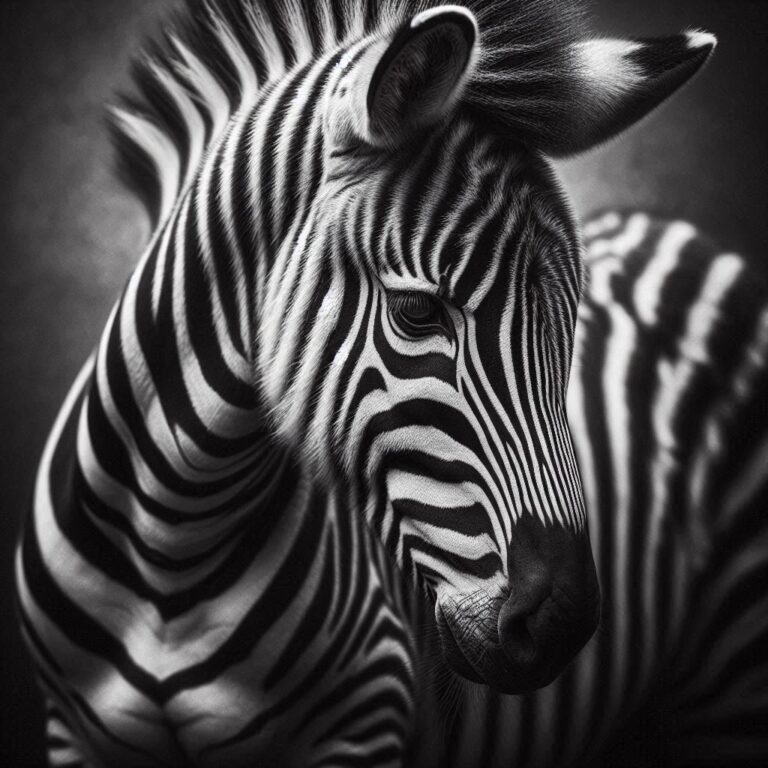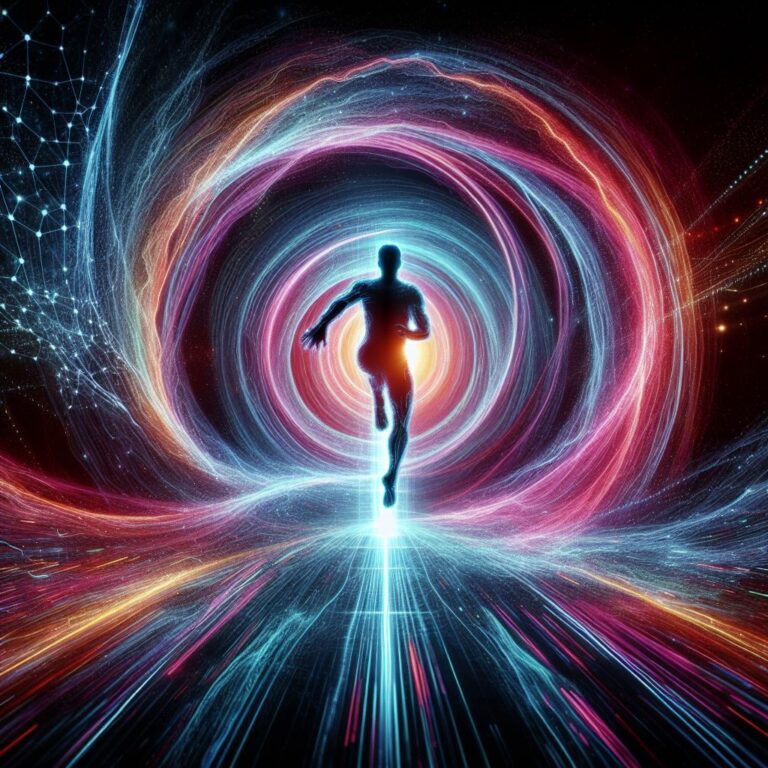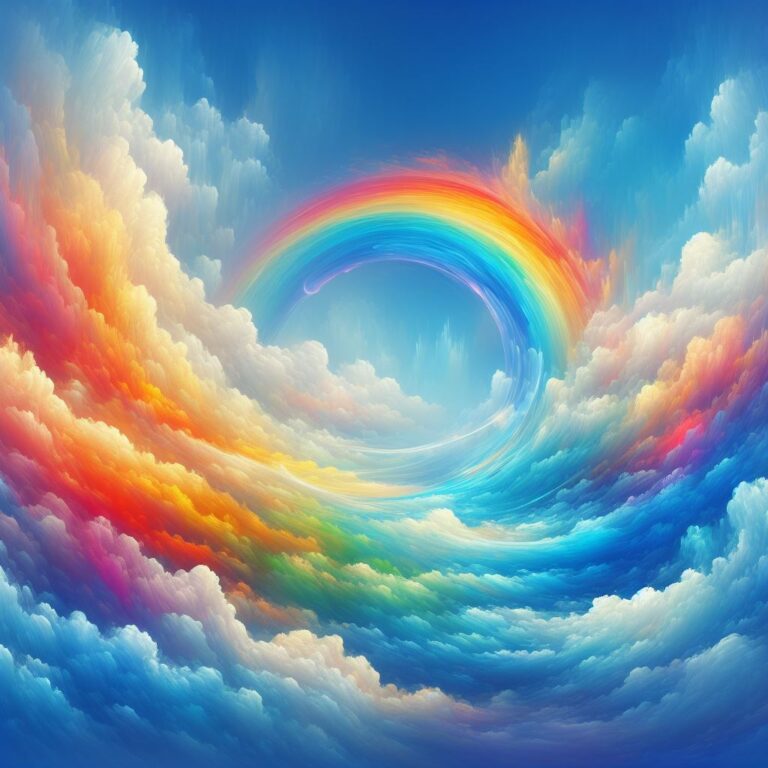The Surprising Spiritual Symbolism and Meaning of Triangles
Look around you right now and take note of all the triangles you see. Notice the sloped roofs, the slices of pizza, the yield signs, and even some foods arranged in pyramid shapes. Triangles are everywhere, yet we rarely pay attention to their significance. These three-sided figures have been charged with symbolic meaning since ancient times, carrying deep spiritual importance across cultures and faiths.
In this article, we’ll explore the mystical side of triangles, including their ties to religion, ancient civilizations, dreams, and other ethereal realms. You’ll gain insight into triangle symbolism in Christianity, Hinduism, alchemy, and more. We’ll also decode distinctive shapes like inverted, double, and interlocked triangles. Read on to understand why this simple geometric shape contains subtle divine messages.
Here’s a quick interpretation:
Triangles are charged with profound symbolic meaning across cultures due to their three sides representing key spiritual trinities. The triangle aptly signifies triune concepts like the Holy Trinity in Christianity, the Trikaya bodies in Buddhism, and the triple goddess. It hints at the three facets of our being – mind, body and spirit. Triangles also denote balance, manifestation and the triadic nature of life through birth, being and death. Their symmetrical shape encapsulates the deep mysticism underlying triples.

The Trinity of Triangles
The defining quality of triangles is the power of three. With their three sides and angles, triangles lend themselves perfectly to representing key trinities and triples. Here are some central triad concepts connected to triangle symbolism:
- Mind, Body, Spirit: Each angle can denote an equal part like our mental, physical, and spiritual selves.
- Birth, Life, Death: One angle marks life’s beginning, one the middle chapter, and a third the final passage.
- Past, Present, Future: Triangles remind us where we started, where we are now, and where we’re headed.
- Father, Son, Holy Ghost: In Christianity, triangles illustrate the Holy Trinity as three-in-one.
Let’s explore how faiths assign divine meaning to the symbolic triangle based on its triple nature.
Holy Trinity in Christianity
The predominant triangle meaning in Christianity deals with the Holy Trinity. The Trinity refers to the Father (God), Son (Jesus), and Holy Spirit as three persons united as one Godhead. The triangle outlines this concept visually with each side representing one component of the three-in-one divine Trinity.
You’ll notice triangles incorporated into church architecture, altars, stained glass windows, and other Christian symbols and art. This helps strengthen the connection between the shape and Triune God in Christianity.
Trikaya in Buddhism
Like the Trinity, Buddhism has its own triple symbol known as the Trikaya, comprised of:
- The Dharmakāya (Truth Body)
- Saṃbhogakāya (Body of Manifestation)
- Nirmāṇakāya (Emanation Body)
Together they form the “Three Bodies of the Buddha.” Triangles represent this in Buddhist art and architecture, with the three sides conveying each aspect. Mandalas (spiritual symbols) also contain triangular patterns to signify the Trikaya.
Yantras in Hinduism
In Hinduism, yantras play an important role in religious practice. Yantras are mystic diagram symbols used to focus the mind during puja (worship). These geometric designs invoke deities and harness universal energies.
Triangles figure prominently in yantras to amplify their sacred powers. Certain yantras even hold triangular grids containing mantras (sacred syllables). The downward and upward triangle also carries the dual energies of feminine Shakti and masculine Shiva respectively.
Alchemy’s Four Elements
Turning from Eastern faiths to Western occultism, alchemists also mapped profound meaning onto the triangular shape. In mystical alchemy traditions, four triangles denote the four elements, each with distinct orientations:
- Fire Triangle – Points upward
- Air Triangle – Points upward with horizontal line at the top
- Water Triangle – Points downward
- Earth Triangle – Points downward with horizontal line at the top
Note how fire (masculine energy) and water (feminine energy) take opposite positions. Air and earth mix the vertical with grounded horizontal lines.
These elemental triangles ultimately represent spiritual transformation in alchemy. Their precise alignments suggest balance and equilibrium between mystical forces.
Interconnected Triangles
So far we’ve examined standalone triangles in symbolism. Now let’s observe what happens when triangles combine in intricate arrangements.
Double Triangles
Two overlapping triangles amplify the innate power of the triangle. Traditions like Hinduism consider interlocked upside-down and upright triangles as divine union between the masculine and feminine. Known as Shatkona, it portrays Shiva (upward pointing energic force) and Shakti (downward pointing creative force) coming together.
Triple Triangles
In Norse tradition, three interlocking triangles form the Valknut or “knot of slain warriors.” This likely signified the afterlife, with triangles representing cyclical life, death, and rebirth. The triangular knot work hints at spiritual continuity even in tragedy.
Geometry of the Gods
Beyond the symbolic, triangles form the infrastructure of sacred spaces and places of worship. What examples stand out across cultures?
Egyptian Pyramids
No list would be complete without the Great Pyramids whose triangular silhouette defines ancient Egypt. Pyramids originally served as majestic tombs for pharaohs, built to last for eternity. Their towering triangle architecture merges seamlessly with the heavens. Even today, the pyramids connect us to that advanced, enigmatic culture.
Native American Teepees
In Native cultures, teepees stand as transportable holy temples erected wherever tribes set up camp. Native peoples slept, socialized, held meetings, and conducted rituals within teepees. The circular base gets narrowed towards the apex in a triangular flow towards the smoke opening. Teepees remain triangular today as enduring Tribal symbols.
Greek Delta Glyph
The uppercase Greek letter Delta resembles a simple triangle, though it represents profound topics. Words using the delta glyph relate to change and transformation – apt meanings for the ever-evolving triangle!
Table: Summary of Triangle Symbolism Across Cultures
| Culture/Religion | Triangle Significance |
|---|---|
| Christianity | Represents Holy Trinity of Father, Son and Holy Spirit |
| Buddhism | Trikaya with 3 bodies of Buddha |
| Hinduism | Part of sacred geometry in yantras for deities |
| Alchemy | Denotes 4 elements – fire, air, water, earth |
| Egypt | Pyramids built as triangular monuments to pharaohs |
| Native Americas | Teepees designed in triangular shape for rituals |
| Greek | Delta glyph triangle signifies change |
Personal Triangle Traditions
Triangles hold timeless spiritual wisdom, perhaps more relevant now than ever. We live in a hectic age where taking time to reflect gets pushed aside in the rush of daily life. Yet geometry bears messages for those with “eyes to see and ears to hear.” Are you listening for the truths triangles whisper in their angles?
Here are simple ways to tune in more deeply to the triangle and glean its gifts:
- Find a quiet moment to sketch triangles representing mind, body, spirit – notice what intuitively comes through
- Place 3 objects forming a triangle (e.g stones) to remind you of life’s essential trilogy each day
- Light 3 candles in a triangular formation, saying a prayer to align with your highest nature
- Next time you pass pyramid architecture, ponder the divine spark all structures – even concrete jungles – carry
Final Thought
Triangles seem to stand the test of time and span across vastly different cultures, always representing fundamental trinities of the universe and spiritual realms. Their three balanced angles aptly convey concepts like mind, body and soul or our beginning, middle and end.
The simple triangular form hints at the great Trinity behind all creation—whether you call that the Holy Trinity, Trikaya, or cosmic order. By contemplating this basic geometry, we connect to divine chains linking the whole cosmic tapestry. Triangles will likely endure as sacred symbols, spanning art, architecture, myth and faith traditions as long as humans continue gazing up in spiritual wonder.
FAQ
1. Why are triangles considered sacred geometry?
Triangles are sacred because their three sides and angles lend themselves to representing trinities and triples that hold spiritual significance across religions and esoteric traditions. The fundamentals of life unfold in threes.
2. What’s the difference between an upright and inverted triangle?
Upright triangles symbolize masculine energy, action, and the elements of fire and air. Inverted triangles represent feminine energy, intuition, and the elements of water and earth.
3. Do specific numbers of triangles have meaning?
Yes, combinations like double triangles and triple triangles take the basic triangle meaning even deeper. Three interlocking triangles in a knot work design signify life, death and rebirth.
4. How were triangles used in Egyptian and Native cultures?
The ancient Egyptians incorporated triangles architecturally in the building of pyramids. Native Americans used the triangular prism shape in constructing teepees for ritual gatherings.
5. What are some spiritual meanings the triangle points to?
Triangles symbolize concepts like the Holy Trinity in Christianity, the Trikaya in Buddhism, alchemy’s four elements, the Triune nature of God, and many other representations of three-in-oneness.
Their balanced design reflects harmony, equilibrium and manifestation.






